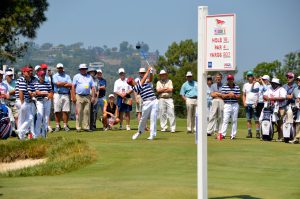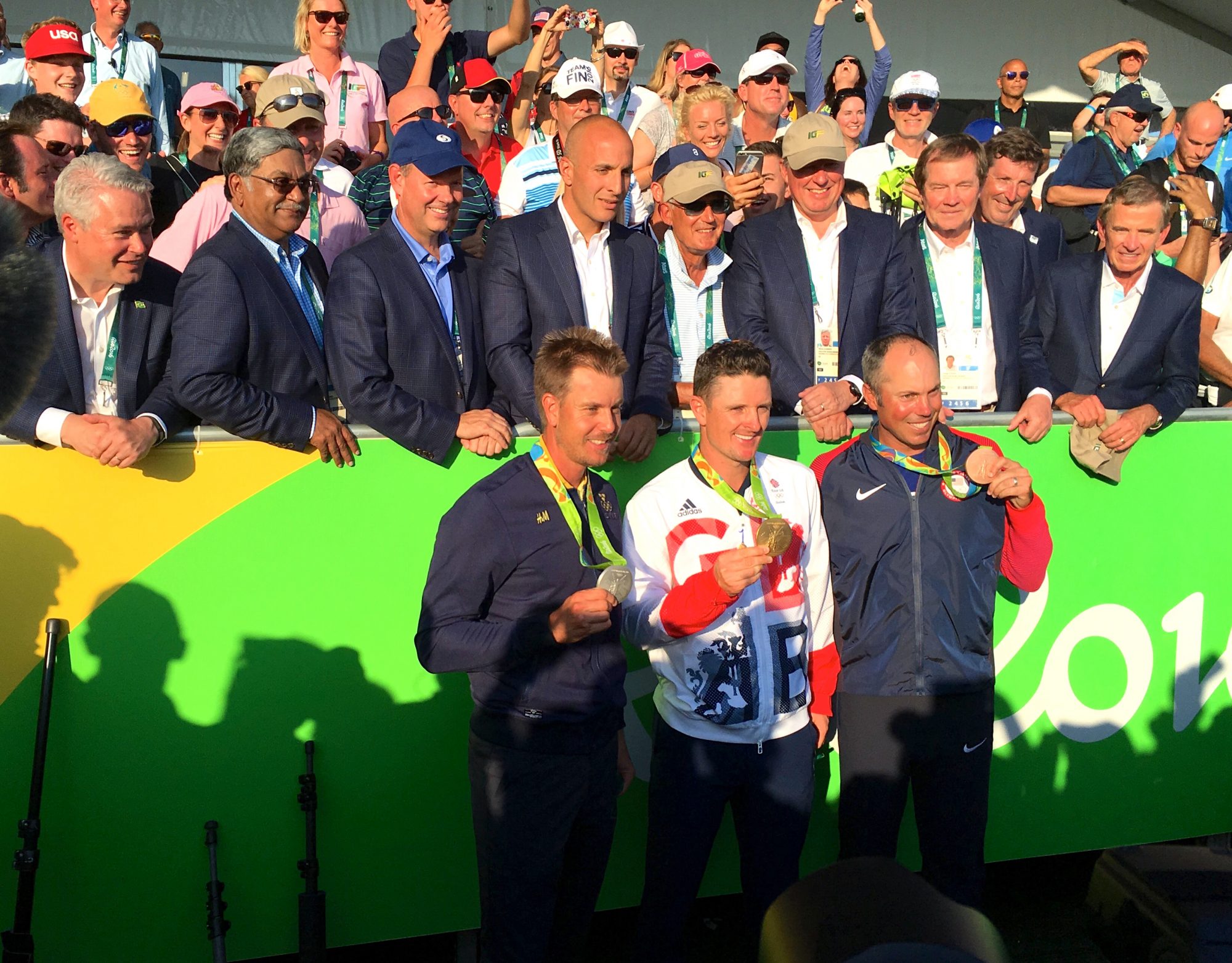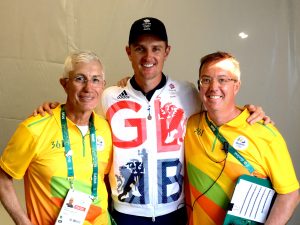 In the two-plus hours it takes to travel from Lionel Ritchie’s old house to the Playboy Mansion, you can learn a lot about a place. And you can learn a lot about a group of people. After that walk at the 2017 Walker Cup on Los Angeles County Club’s North course the biggest thing I learned is how open and excited the membership is to be having us (and some extraordinarily elite golfers) all over for the weekend at one of America’s best and most exclusive tracts.
In the two-plus hours it takes to travel from Lionel Ritchie’s old house to the Playboy Mansion, you can learn a lot about a place. And you can learn a lot about a group of people. After that walk at the 2017 Walker Cup on Los Angeles County Club’s North course the biggest thing I learned is how open and excited the membership is to be having us (and some extraordinarily elite golfers) all over for the weekend at one of America’s best and most exclusive tracts.
Having scored golf tournaments all over the world, I know there are Walker Cups where it’s no more likely to run into a member on the course during play than it is an Emirati in Dubai at the final event on the European Tour. But throughout the weekend in LA it was the members of LACC not just showing up, but doing some heavy lifting – serving as standard bearers, hustling from greens to the middle of fairways to marshal holes (never seeing a putt drop), working multiple rounds each day, and thanking any volunteer who wasn’t a member for helping make their home course shine.
It was completely unexpected… akin to the lack of mosquitoes on the Olympic golf course in Rio unexpected. The lead up to the tournament dwelled on the lack of openness and public signage at the great old course hidden off Wilshire up the bending drive as much as it did on the Gil Hanse re-design and the quality of the teams assembled from both sides of the Atlantic.
The course was everything I expected and more. Paintings should be made – and apparently are every few years – of the approach to the 1st hole with the Beverly Hilton and an iconic looking steeple in the background, the approach on the 3rd with its trio of palm trees rising above the left side of the green, the beautiful 7th from the back tee, the fantastic 8th hole from multiple locations as it twists from tee to green, the Hollywood hills framing the approach to 14, and the wonderfully curving fairway as viewed from the 17th tee. And of course the jaw dropping afternoon views of downtown Los Angeles from the 11th tee box remind you both of where you are and how far away from it all you’ve been.
Much has been said and written about the golf course, but more could and should have been – and likely will – when the USGA returns with the U.S. Open in six years. The George Thomas design and relatively recent renovation was a treat to walk. I particularly loved the space, sometimes as much as 20-30 yards, between “greenside” bunkers and greens – something that wasn’t usually apparent from the approach shot but added a whole new dimension to a handful of holes. The putting surfaces were firm and fast, a few greens actually reminding me of Merion’s that are subtle but tricky and more revealing as you see balls roll on them over multiple rounds.
For me personally, it was a thrill to be on the grounds as Norman Xiong emerged on the international stage as maybe the most dominate teenager in American golf. In January we walked a practice round during his collegiate debut in Arizona and again watched him murder golf balls at Stanford in March. Friendly, good-natured and with a huge grin on his face, the kid is a fearless golfer with a violently in control swing that is awesome to behold.
In what turned out to be an America rout, I achieved the nearly unthinkable: scoring two matches and two full points for the GB&I side. Saturday morning saw towering drives – one a 390-yard bomb on the 14th – from Cameron Champ and memorable lag putting (with a few key makes) from Scottie Scheffler, but also too many loose shots off the tee and on approaches plus putts that often raced by the hole leaving more than knee-knockers coming back. The GB&I pair of Scott Gregory (last year’s British Amateur Champion) and Jack Singh Brar made a lot of great decisions and played with a pace unheard of in the slow moving American college game.
On Sunday, we were witness to good but not great golf between Doc Redman, the reigning U.S. Amateur champion who’d shown himself to be a fantastic match play champion on another George Thomas design just down the road at Riviera last month, and Stanford alum and Welshman David Boote who was turning pro the next day. Both players entered the round without so much as half a point and the lack of conceded putts proved they were both gunning for a victory. But with only five birdies between them – and even a Boote victory with bogey on the par 3 seventh – the golf was probably not as crisp as either hoped. We were the last of only three singles matches to reach the 18th and watched the lights begin to glow on the clubhouse as thousands of spectators watched Doc’s last approach shot bound over the green and his well struck chip nonetheless race beyond the hole coming fast off the downslope.
The round was marked more by the fun, humor and good-natured exchanges between the standard bearer, rules official and me. I’d worked with the official before and share mutual friends from the San Francisco Bay area where he lives. And the standard bearer endured photos from his wife on the 3rd tee, cheers and heckles from his fellow members throughout the round, and tolerated my golf travel stories while adding insights on each hole and spirited commentary on golf, life and the karma that does in fact often wind through our shared journey.
The Walker Cup, and golf in general, is full of class acts – none more so than my pair of LACC standard bearers, but also that weekend from Scottie seeking out the scorer and standard bearer on the first tee to shake our hands and thank us, to Rules officials introducing us to players and sharing their stories from inside the ropes, to (again) LACC members telling tales from decades of membership and experiences on both the North and South courses and asking questions about U.S. Opens past and looking forward to their turn as hosts in 2023.
The class is always evident in Maverick McNealy’s grace, his wide smile and goofy joy as he talks about embracing the fun of professional golf and his excitement for the opportunities ahead on the PGA Tour in October and beyond. The class was certainly highlighted and on public display in the relationships forged between LACC caddies and their players – caddies I had the good fortune to meet on Friday with a buddy of mine who’s a U.S. Naval Academy graduate, officer in the Naval Reserve, aspiring screen writer and occasional LACC caddie himself. And the class was there in the exchanges you have with people you’ve met along the way, like the head pro at Hazeltine National with stories of the Ryder Cup and his love for this event, fellow volunteers from USGA events across the country cropping up here together in LA, or TV production folks you forged a bond with at the Olympics (who are this one weekend forced to wear long pants because well, LACC is pants-only you have to know).
I never did journey down behind the 14th tee to see the monkeys and peacocks and other assorted members of the Playboy Mansion zoo, but after three days of wandering and scoring across the 300 acres of LACC the highlights were never going to be so exotic. The highlights were – as they usually are after such an event – the people and the stories, the shared experience of watching greatness and near greatness, and the heart and the passion and the joy of each moment.

 While it may not exactly be my story to share, I’m not sure anything better sums up my experience at Olympic golf than Justin Rose’s Facetime call to his kids right after he signed his scorecard.
While it may not exactly be my story to share, I’m not sure anything better sums up my experience at Olympic golf than Justin Rose’s Facetime call to his kids right after he signed his scorecard.